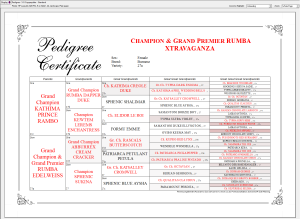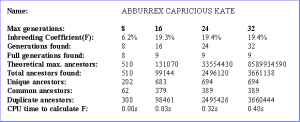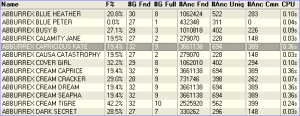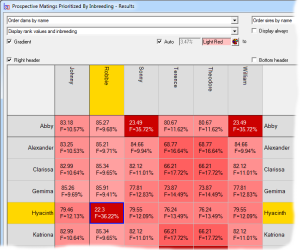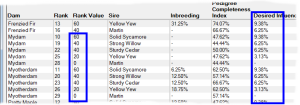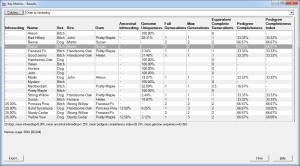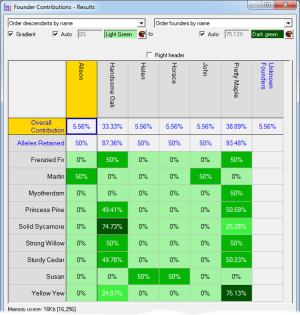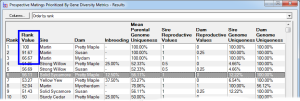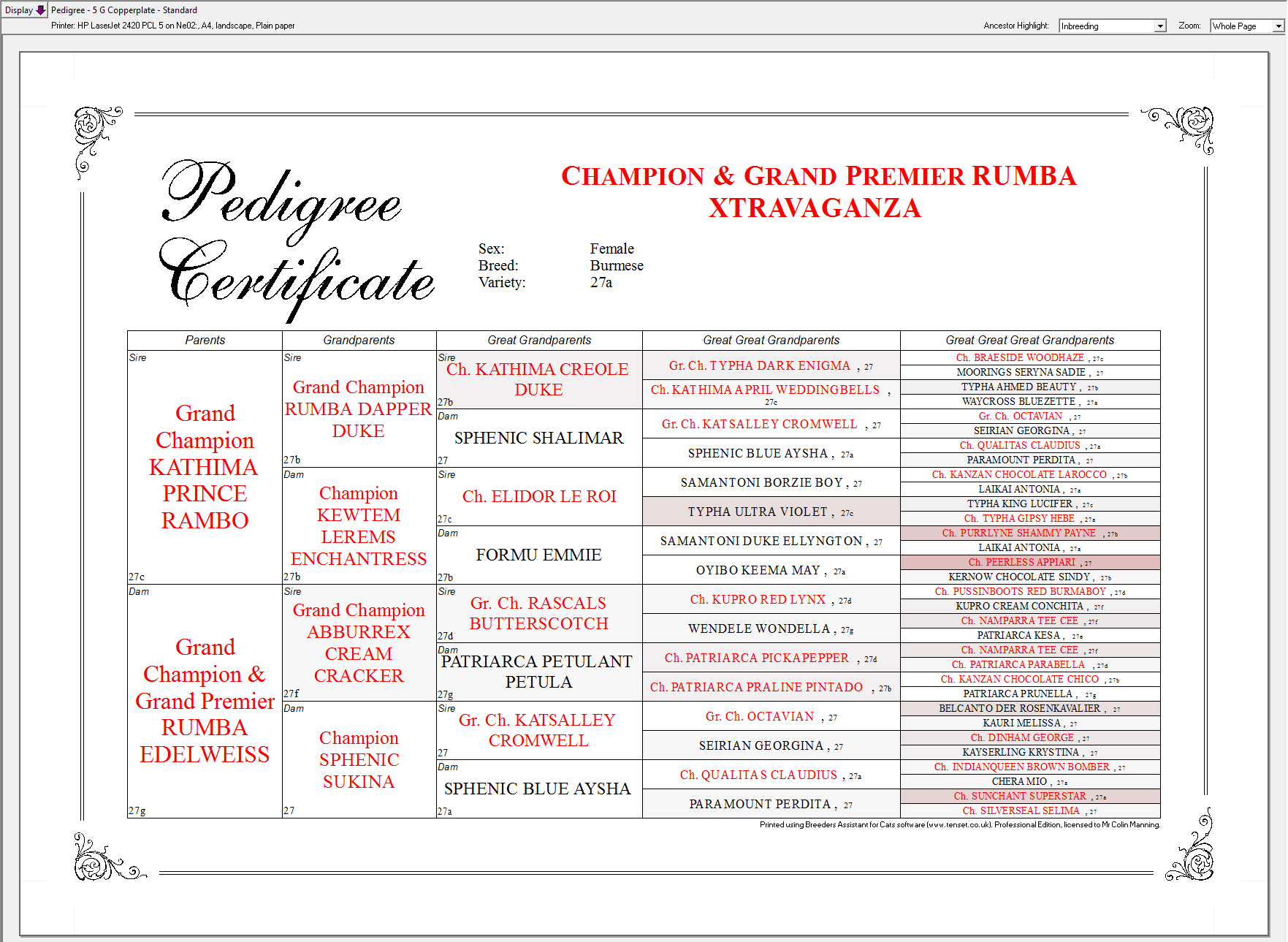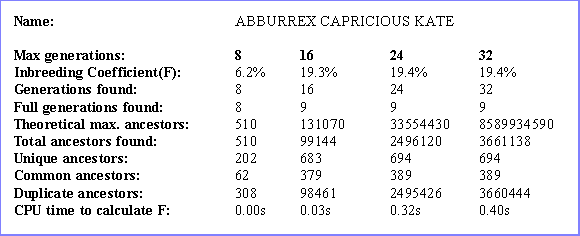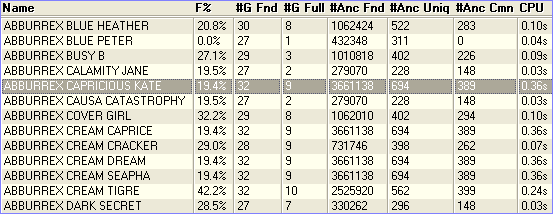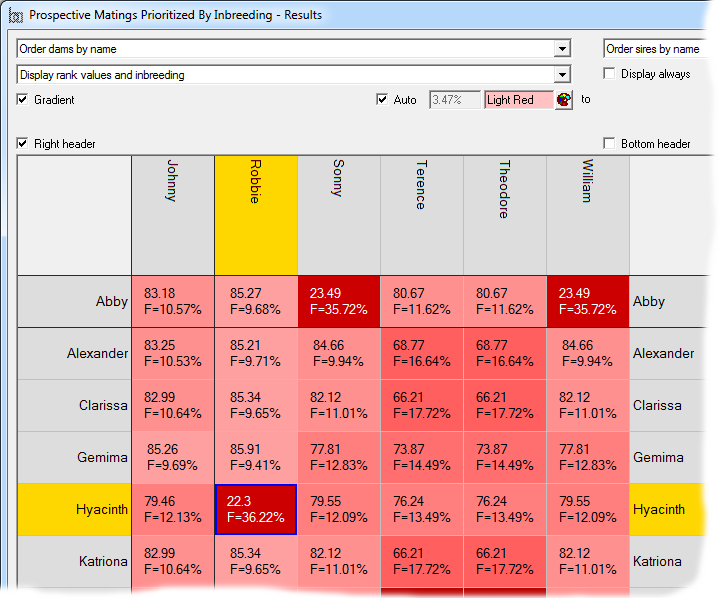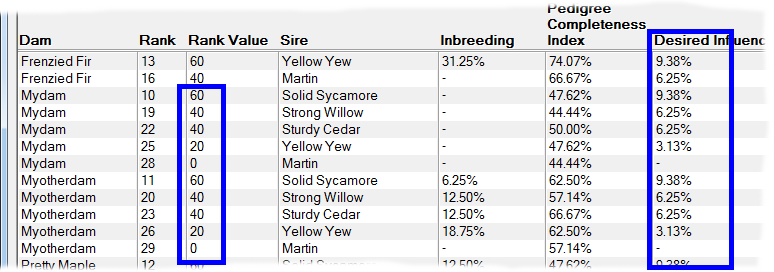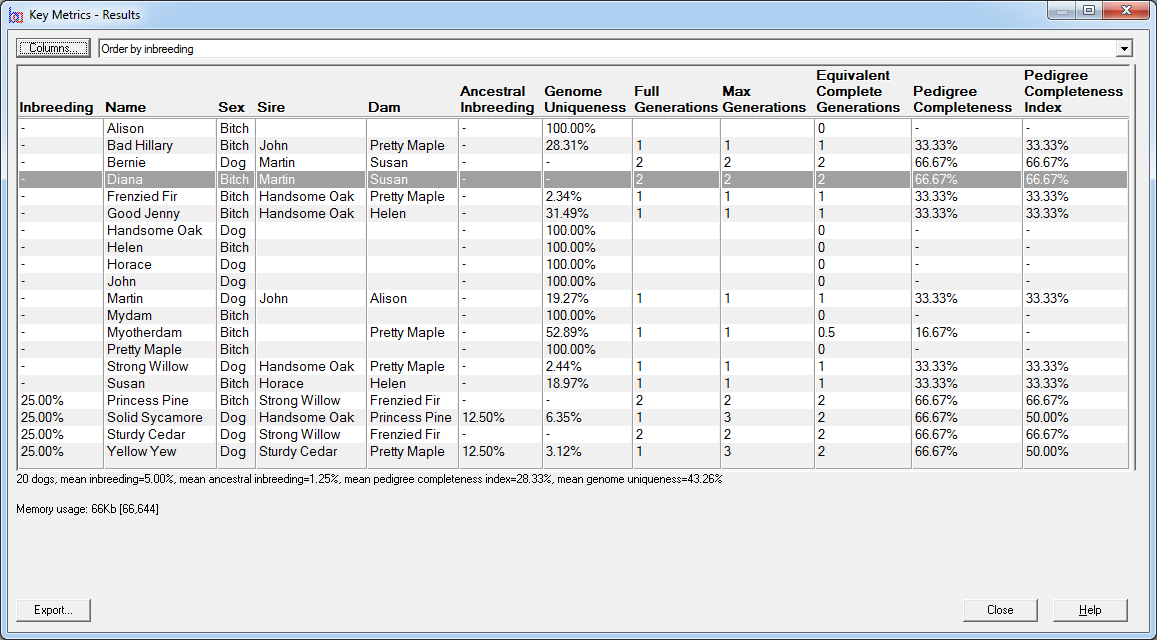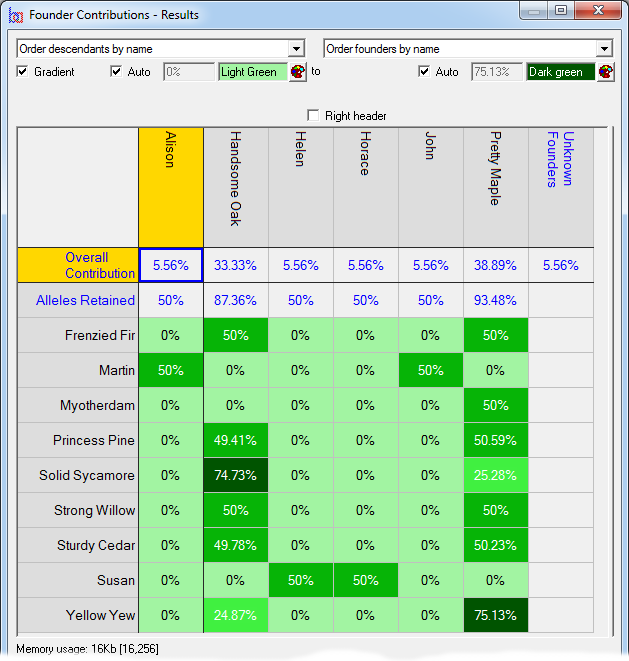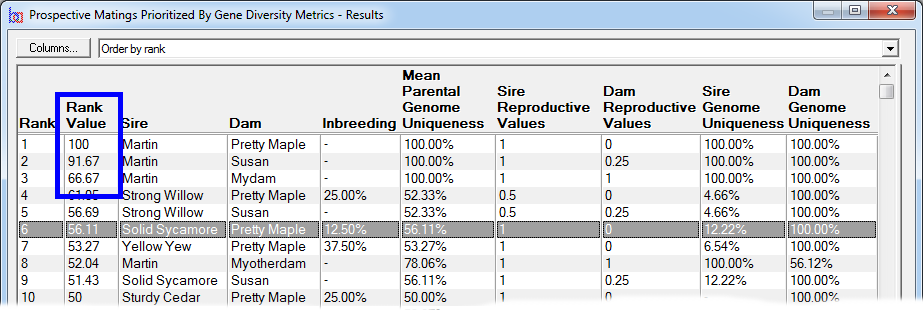Responsible breeders know that when there is a relatively small breeding population, for example with some of the rarer breeds of pedigree cats and dogs, where there are relatively few distinct breeding lines, there is a considerable risk of problems arising from loss of genetic diversity in the breeding population.
This can give rise to serious health issues due to persistently high levels of inbreeding which may have alarming consequences for certain breeds. It is a problem often exacerbated in pedigreed fancy animals such as dogs and cats by the overuse of prominent sires.
Inbreeding
One thing you can do as a breeder is to keep an eye on the prospective inbreeding that will result from a mating. To do that you need to have sufficient pedigree data available to you - i.e. details of breeding lines that go back far enough for your breeding software to be able to compute a meaningful inbreeding coefficient. It is quite ineffective to only go back say 3 generations when computing the inbreeding if it so happens that in your pedigree there are no common ancestors within 3 generations, whilst if you go back say 6 there are many. In such situations the computed inbreeding to 3 generations of 0% is a grossly misleading figure.
Tenset's Breeders Assistant, PedPro and Pedigree Assistant products all compute inbreeding to a configurable depth of ancestry.
Breeders Assistant has additional inbreeding tools that can help. Video ![]()
E.g. it can:
- Help find 'self-parenting' errors in your data (where there is an individual mistakenly recorded as being descended from itself).
- Tabulate inbreeding and related values for a given individual computed to various depths of ancestry in a single report.
- It can tag the common ancestors of a group of records.
- It can include the relationship coefficient on trial mating pedigrees and mating certificates1.
- It can highlight common ancestors within a pedigree.
- With the Professional Edition it can highlight inbred ancestors within a pedigree.
Minimizing Inbreeding
To help minimize inbreeding, the Extended Edition of Breeders Assistant has the means to prioritize prospective matings according to the inbreeding that would result. It can take a group of sires and dams and compute the inbreeding that would result from thousands of potential matings, and list the results in increasing order of offspring inbreeding. Video ![]()
This is just one of a suite of advanced population genetics tools included in the Extended Edition.
Another method of ranking prospective matings is to take into account the extent of kinship the potential offspring will have with a set of chosen individuals that have either 'desired' or 'unwanted' influence, giving priority to matings where the potential offspring will have greater/lesser kinship with the desired/undesirable individuals. E.g. if there is a particular individual within the breed history that, for whatever reason, you wish to breed with as much (or as little) influence from as possible, this gives you the means to achieve that.
Mean Kinship, Founder Analysis and Genome Uniqueness
The Extended Edition of Breeders Assistant will also compute various measures of genetic diversity, including:
- Mean Kinship - the mean of an individuals kinship coefficient with every other member of a breeding population, including itself. Video

- Pedigree Completeness Index2 - a measure of the completeness of a pedigree that is useful when assessing the reliability of the inbreeding coefficient.
- Genome Uniqueness - the probability that an individual contains founder alleles not present in any other single (normally) individual in a current population of which it is part.
- Founder Equivalents3 - for a breeding pool ('current population') this is the number of equally contributing founders that would be expected to produce the same level of genetic diversity as the current population. Video

- Founder Genome Equivalents3 - similar to the above however it also takes genetic drift into account: it is the number of equally contributing founders with no random loss of alleles in the offspring that would be expected to produce the same level of genetic diversity as the current population.
Selecting To Maximize Genetic Diversity
Many of the measures of genetic diversity listed above can be used when selecting prospective matings. Video ![]()
E.g. it is possible to rank prospective matings so as to minimize the mean kinship that the addition of their offspring would generate in the breeding population. Another ranking method is to favour mating individuals that carry uniquely inherited founder genes - so as to try to avoid losing those founder genes from the breeding pool forever.
For smaller closed populations it is important that the maximum amount of genetic diversity is maintained. This means more than simply selecting for low coancestry for prospective breedings. E.g. it is possible that the genes from a particular founder in a small breed are badly represented in the current breeding population (in comparison to other founders, that is), and that selecting to increase the genetic contribution of that founder is actually more important, initially, than purely selecting for the lowest inbreeding - because it may increase the presence of that founder's genes within the current, active, breeding population.
1. Mating certificates are only available with the cat, dog and 'Generic' versions of Breeders Assistant.
2. Computed using the method of MacCluer et al ("Inbreeding and Pedigree Structure in Standardbreed Horses", Journal of Heredity 1983, 74:394-399).
3. As defined by Lacy, RC. "Analysis of founder representation in pedigrees: Founder equivalents and founder genome equivalents". Zoo Biology 8:111-124, 1989.)
